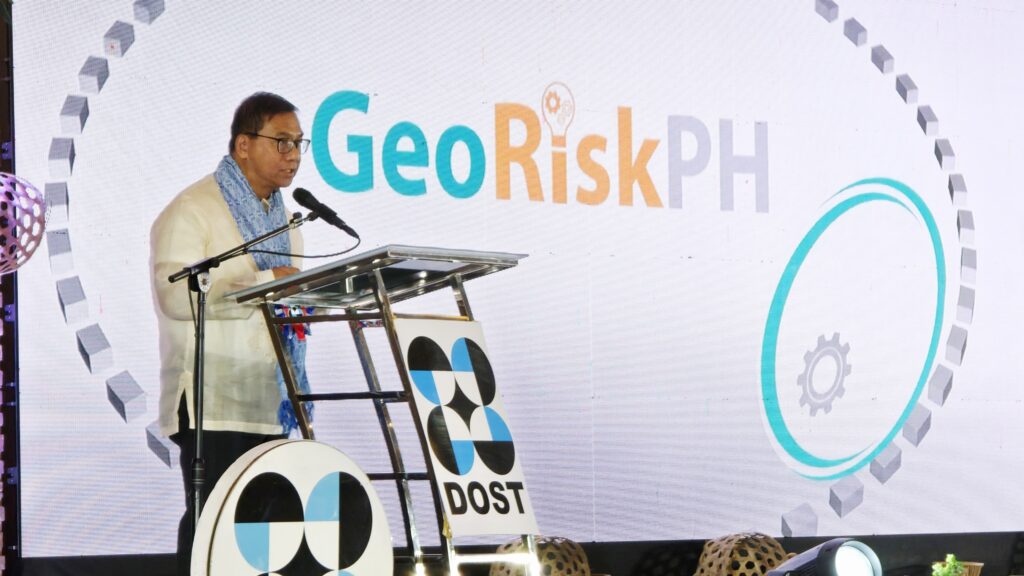
Baguio City – The Department of Science and Technology – Cordillera Administrative Region (DOST-CAR) have successfully hosted two major science-led events, the HANDA Pilipinas Luzon Leg 2025 and the 2025 Regional Science, Technology, and Innovation Week (RSTW) from August 7 to 9 at the Newtown Plaza Hotel, Baguio City.
The twin events gathered leaders from the national government agencies and local government units, researchers, innovators, educators, and disaster risk reduction practitioners during the three-day celebration which highlighted how science, technology, and innovation (STI) can empower and transform communities.
With the theme “Bida ang HANDA: STI for a Smart and Resilient Luzon,” the HANDA Pilipinas Luzon Leg 2025 underscored the growing importance of proactive and science-based approaches to disaster preparedness.
As the host region, DOST-CAR spearheaded the convergence of key stakeholders to demonstrate how STI can equip communities not only to respond but to anticipate, mitigate, adapt to, and even thrive amid challenges posed by climate change and natural disasters.
Baguio City Vice Mayor Faustino Olowan, speaking on behalf of Mayor Benjamin Magalong, formally welcomed the participants and extended the city’s gratitude to DOST-CAR for choosing Baguio as the host city. He emphasized the event’s relevance to local resilience efforts and expressed his support with the words, “Mabuhay ang siyensya at inobasyon para sa Bagong Pilipinas.”
DOST-CAR Regional Director Dr. Nancy A. Bantog focused on the role of collaboration in achieving shared resilience goals, noting that the event brings together national agencies, scientists, innovators, disaster risk reduction experts, local planners, and the academe. In her message, she framed the event as a platform for exchanging tools, ideas, and solutions that strengthen regional and local capacities for disaster preparedness and smart development.
Keynote speaker and DOST Secretary Dr. Renato U. Solidum Jr. echoed the event’s central message as he emphasized the vital role of STI in equipping communities with the capacity to prevent, reduce, and respond to disaster risks. He highlighted DOST-led programs such as GeoRiskPH, Project SARAi, DANAS Project, MOCCOV, GRIND, and Innovation Hubs as vital components of the country’s broader resilience agenda.
“Let us take action. Let us be prepared. Let us be HANDA,” he said, rallying participants to champion science as a tool for survival and progress.
Presidential Assistant for Northern Luzon Assistant Secretary Ana Carmela V. Remigio also graced the occasion and expressed her support for DOST’s continuing initiatives. She recognized that these efforts align with President Ferdinand R. Marcos Jr.’s administration and with the strategic priorities outlined in the Philippine Development Plan.
In the afternoon of the same day, the 2025 Regional Science, Technology, and Innovation Week (RSTW) in CAR was formally launched, also under the leadership of DOST-CAR. The regional celebration carried the theme “Building Smart and Sustainable Communities” and focused on the application of STI in improving local livelihoods, education, public services, and environmental management.
Dr. Bantog once again emphasized the importance of making science accessible, responsive, and empowering for all Filipinos, particularly those in geographically isolated and disadvantaged areas.
Among the highlights of the RSTW opening was the launch of DOST-CAR’s official mascot, “CURIOSTI,” which symbolizes curiosity and the enthusiasm to explore science among learners and the general public. The mascot is expected to be a visual icon of DOST-CAR’s continuing commitment to promote science culture in the region.
Secretary Solidum returned to spotlight DOST’s four core pillars: human well-being, wealth creation, wealth protection, and sustainability, and reaffirmed the agency’s role in building stronger, innovation-driven local economies.
As part of DOST’s support for the Cordilleras, a ceremonial turnover of mountain engineering technologies was also conducted. These included slope stability analysis and engineering interventions for rice terraces and roads in terrain areas, as well as an artificial groundwater recharge facility designed to help mitigate droughts and flooding in vulnerable upland communities.
Throughout the three-day celebration, participants are expected to engage in various forums, technical sessions, and exhibits showcasing ready-for-adoption technologies from DOST agencies, partner SUCs, LGUs, and private sector collaborators. From tools for disaster risk reduction to smart solutions for agriculture, health, and infrastructure, the events aim to bridge the gap between science and the communities that need it most. (Nelson Santos)
